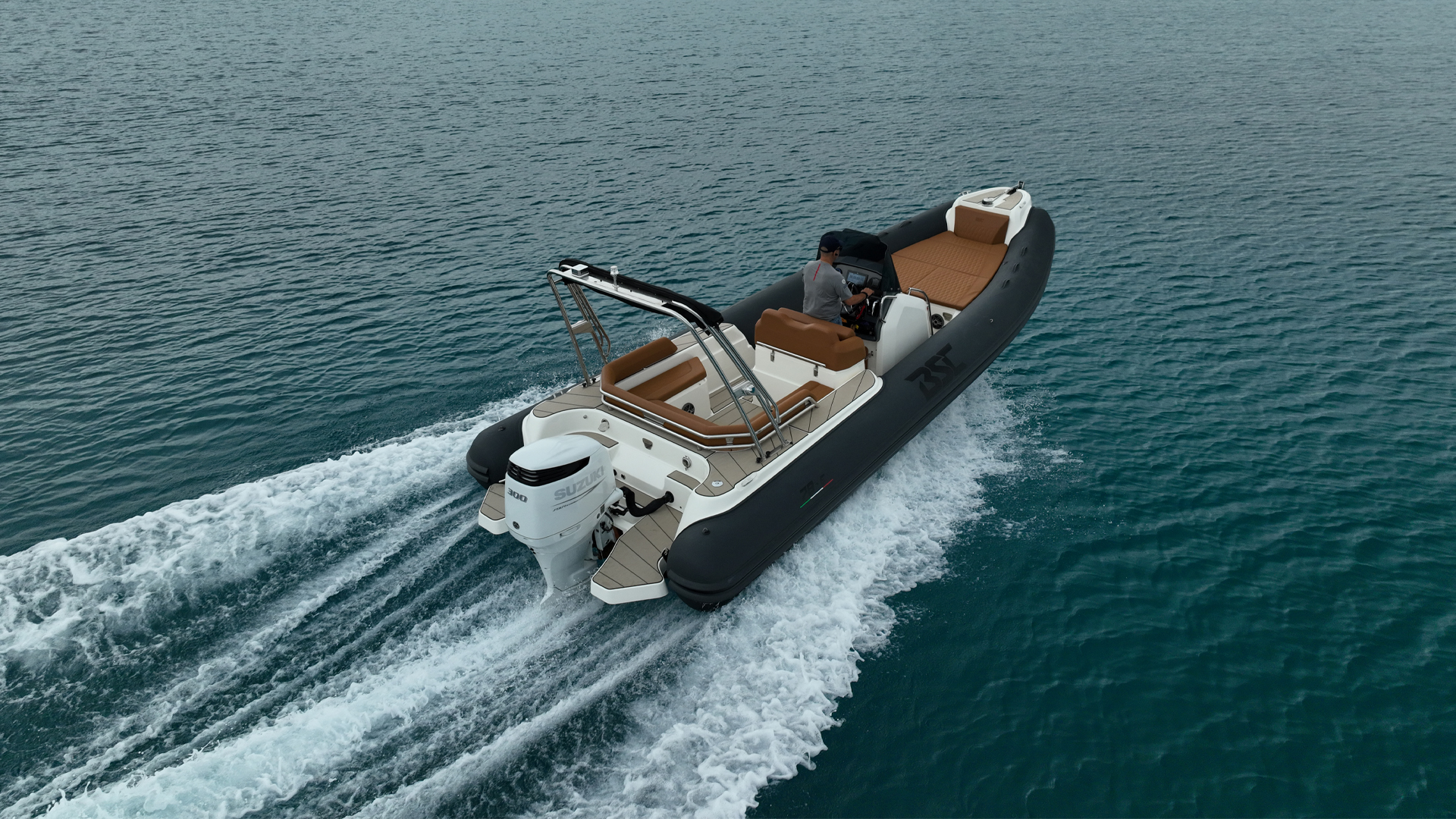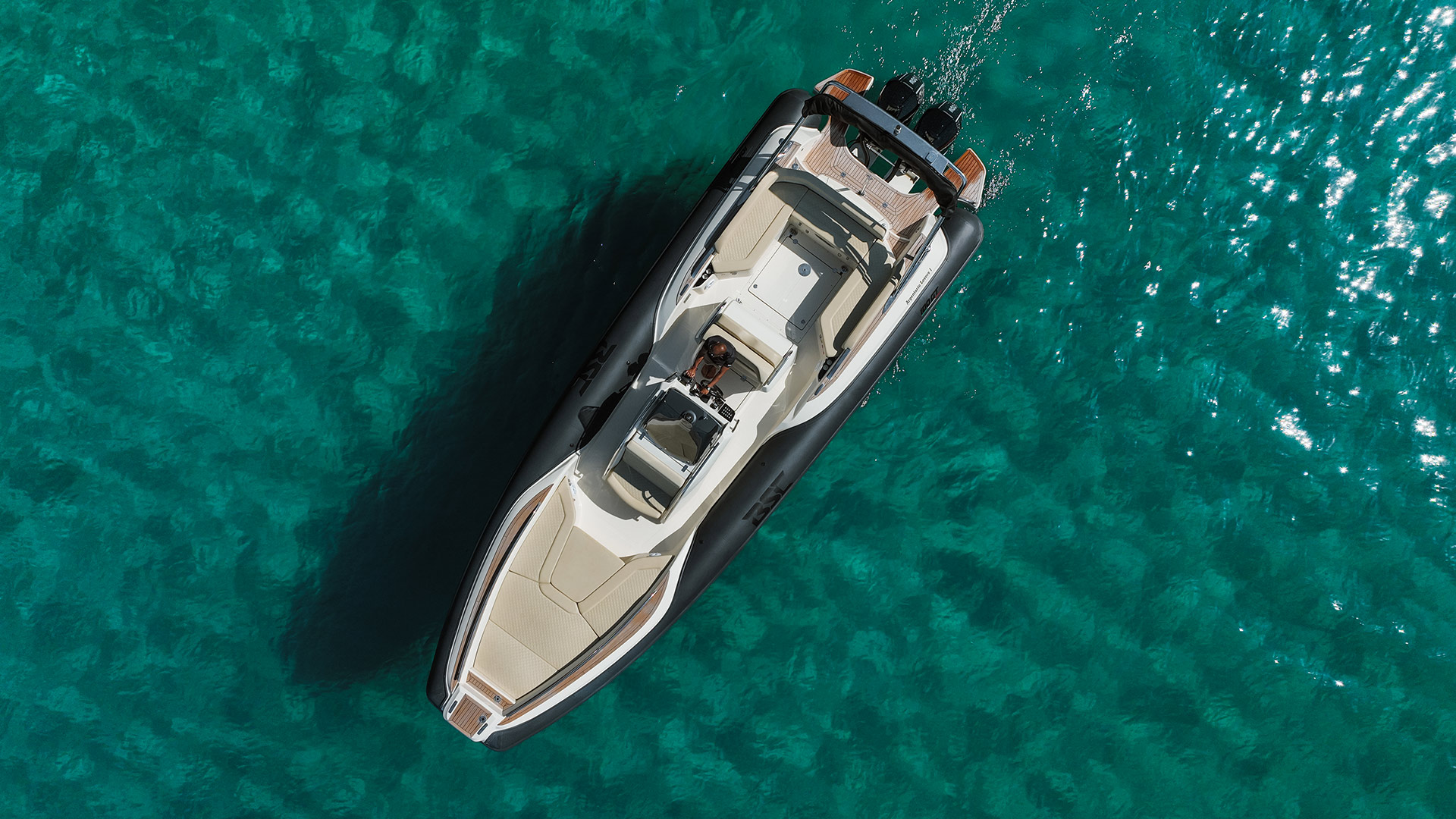BSC guides you in choosing your rib
In the last decade, inflatable boats have become the preferred choice for those who navigate for passion.
For both experienced boaters and novices, ribs represent the primary choice over other types of boats. Why? Customization, lightness, maneuverability, and safety are the main reasons influencing the final choice.
In a sea of offers, it becomes increasingly difficult to navigate and choose the rib that best meets your needs.
To understand which rib to choose, it is necessary to consider some crucial aspects starting from 3 basic questions:
It is also necessary to consider the possibility of storing the rib in a nearby port during the winter season.
After answering these questions and evaluating every characteristic of the rib, it would be advisable to conduct a water test. This way, you can verify if the inflatable boat meets your needs or if it is necessary to consider other models.
Rigid ribs seem to be the most popular choice due to the numerous advantages they offer.
Let’s look at the benefits of these boats.
Rigid ribs: All the advantages
The reason why rigid ribs are the first choice among most boaters and owners today is their high stability and safety during navigation. Not least, the low fuel consumption, which remains low even at high speeds.
Structure
Their structure, consisting of a rigid bottom surrounded by inflatable tubes, makes these boats suitable for multiple uses. Whatever their intended use, they stay on course and are very “soft” and easy to maneuver even at high speeds.
Thanks to this structure, the risk of sinking is practically zero, even in cases where a lot of water is taken on board. In any case, to completely avoid the possibility of sinking, remember to always keep the valves and cockpit drain plugs open to properly and constantly discharge water on board.
Load, Transport, Intended Use
Another advantage of rigid ribs is the ability to transport heavy loads on a light frame. Thanks to the inflatable tubes, the boat can float regardless of its total weight.
It is thus possible to equip the rib with the necessary equipment for your purposes: seats for transporting tourists, racks for diving equipment, rod holders for fishing, ...
The extreme versatility of rigid inflatable boats is clear at this point.
Let's try to answer the initial questions to guide you in choosing the inflatable boat that suits you best.
Nautical license: Is it really mandatory in Italy?
In Italy, just like with cars, based on the engine power and the size of the boat, it is necessary to have a license and be of legal age to drive it.
There are 3 categories of nautical licenses:
- Category A – Allows commanding and piloting sail and motor pleasure boats or motorboats within 12 miles from the coast.
- Category B – Allows commanding pleasure ships over 24 meters. To obtain it, you must have held a Category A license for three years.
- Category C – Allows commanding and directing pleasure boats.
As with everything, there are exceptions. If the rib does not exceed 24 meters in length, its engine has a power of less than 40 HP, and provided you navigate within 6 nautical miles, then the boat can be driven even without a nautical license.
As for age restrictions, the following rules must be observed:
- If you are 18 years old, you can drive pleasure boats.
- If you are 16 years old, you can drive pleasure crafts.
- If you are 14 years old, you can navigate on sailboats with a sail area greater than 4 sq m and on rowing units within 1 mile from the coast.

A rib for every activity
To choose a rib, you need to have clear purposes, that is, for what activity and in what way you want to use the boat. This is because, based on the type of activity performed, you can choose how to equip the boat.
For example, if the rib will be used for transporting tourists, it can be equipped with seats and benches; if the rib will be used for sports activities such as diving or snorkeling, it can be equipped with racks and cylinder holders to carry the necessary accessories; if the purpose is to transport goods and people over short distances, tenders are the ideal solution...
BSC Offer
BSC inflatable boats are divided into 4 lines: Gamma B, Tourism, Tender, and Open. Each one targets a specific audience based on needs and intended use.
Now that we have seen all the fundamental aspects to examine when choosing, we can delve into the topic of material. The material of the tube is what most influences the durability of the inflatable boat. The two most commonly used materials are Hypalon-Neoprene and PVC.
Hypalon-Neoprene or PVC?
Hypalon-Neoprene tubes have a layered structure. From the outermost to the deepest, the layers are as follows:
- Hypalon – Material with excellent resistance to weather conditions, abrasion, and chemicals.
- Neoprene – Has excellent adhesiveness and impermeability and ensures strong bonding. It also effectively retains air inside the tube.
- Nylon or polyester fabric – These are high-strength materials with excellent mechanical properties. They give shape stability and increase the durability of the tubes.
Hypalon-Neoprene, being composed of multiple materials, proportionally increases the price of the rib compared to those with PVC tubes. The lifespan of a Hypalon-Neoprene rib is longer: we are talking about 30 years compared to 10 years.
The higher quality and efficiency of Hypalon-Neoprene is very evident. For this reason, BSC uses strictly Hypalon-Neoprene tubes divided into compartments for easy inflation. We offer our customers only the best, guaranteeing quality components from the smallest seam to the hull.
The last aspect to consider is the engine. There are hundreds of brands and engines with various characteristics on the market, so to choose one, you must always consider the use of the boat, its size, and the desires of the boater or owner.
On BSC's YouTube channel, you can find water tests with the most renowned engine brands: Suzuki, Honda, Mercury, and Yamaha.
Watch now!
For more in-depth advice, you can contact us or visit our shipyard.




